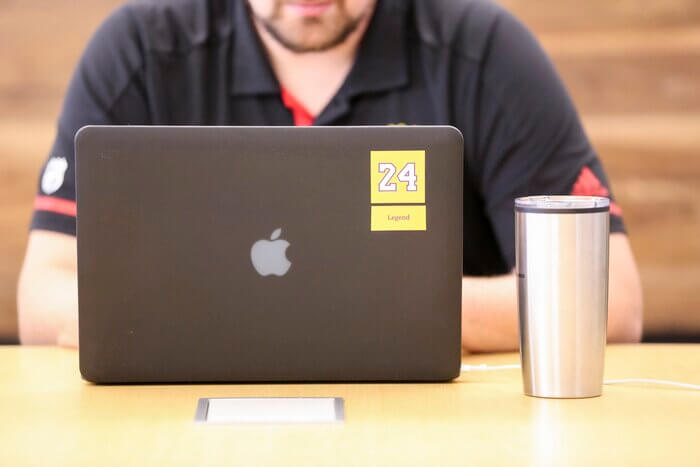
What is IT documentation? In a nutshell, it is a full database of all the information an IT team needs to fulfill its tasks efficiently. It should involve all kinds of key documents: detailed instructions for specific operations, onboarding docs, information about customers, standard operating procedures (SOPs), and many other things. Informative IT documentation must cover a lot of spheres: from recovery plans and instructions to hardware and software. IT documentation’s main goal is to increase the efficiency of work: documentation helps to speed up common processes and make them flawless – here appears the capacity to develop your business in general.
Benefits of IT Documentation
If you still ask yourself whether you need IT documentation in your company, here are the benefits of it:
- Eliminate errors and save time. Even repetitive processes sometimes make experienced employees stumble and blunder or spend another 10-15 minutes going through the motions. But if they use informative instructions, they will make fewer mistakes and spare time.
- Great help desk support. Help desk support specialists provide assistance in issues related to hardware and software, computer systems, etc. IT documentation regulates this field as well. It tells how to solve a problem. And, special service databases can be created. Can you imagine a situation when a user is transferred from one technician to another, and every time they have to repeat the same details. The best solution is to create a service database, and the first technician can fill in all the necessary information to make it available to all colleagues. This is IT documentation as well.
- Protect your company. Every company has some specific information that should remain within the company even if employees leave it or go on a long vacation. Critical information should not be only in their heads. IT documentation solves that problem – when all the information has been documented, you won’t lose it even if the employees come and go.
- Quick and effective onboarding. IT onboarding is one of the processes that should definitely be documented. Strong onboarding documentation can help technicians train themselves and spend less time consulting with more experienced colleagues. IT onboarding templates are quite useful as they show which technology stacks new employees need. Some companies even use IT onboarding checklists.
- Quick problem-solving. Infrastructure components interaction diagram helps Ops Team reduce time for solving problems (servers, hosting centers, data and command flows, etc).

How to Improve IT Documentation?
The main question about any type of documentation is whether it has real value. To make your IT documentation valuable, here are the best practices to improve its quality:
- Figure out what information to document. Documenting is vital, but you cannot document every step you and your teammates make. Some members of your team need hardware and software application inventories and service histories; others need docs on employee onboarding or taking a support call. Make sure that the information you document is in demand.
- Create standards of documenting information. Using templates can become one of the steps towards standardization of documentation, thus helping to manage the information easily – to navigate and read it.
- Determine who should document. Sometimes, it is hard to find a person who can document. Should it be a person who at the moment has time to document? Not exactly. It should be a person who at first-hand deals with the task. This person has more information than anyone else.
- Make sure the information is relevant. You should update existing documents when something changes. It is better to choose the date of review for every significant document beforehand. In this case, you will not forget to update docs and surely will include all the changes – sometimes, teams simply forget to update docs thinking that it has already been done. And, you will define the scope of documents that are to be replenished – it is not always obvious if this or that document should be updated or not.
- Try out your documentation. To check if your IT documentation is easy-to-understand and describes the processes correctly, simply try to follow your instructions step by step to see where they lead you.
- Add visuals. Needless to say, good visuals make the information natural and clear. Of course, you can use videos in your documentation. Our post, Latest Tips on Using Video Content in Technical Documentation, will give you more information about that. But if you are not ready to create videos, you can use diagrams; check out our post Diagrams in Software Documentation.
How to Use Diagrams in IT Documentation?
Diagrams are an amazing format of information visualization in technical documentation. In the sea of words and data, diagrams give users an understanding of ideas, concepts, relations, statistical data, constructions, and many other things.
Today, one may find a great variety of diagram types:
- Project chart (project timeline, status table, decision tree)
- Software design diagram (UML model diagram, program flowchart, Jackson diagram)
- Database diagram (database model diagram, ORM diagram)
- Business diagram (business matrix, enterprise architecture, target diagram)
- Mind map (brainstorming diagram, concept map)
- etc.
One of the greatest things today is that diagrams are not simply pictures, they can be dynamic, which attracts the attention of users and clearly transmits the message of the document.
And, here are the most popular diagram tools:
- Miro. Is a collaborative platform for teams. You can create amazing diagrams for complex systems and processes. Easy-to-use and offers a great variety of templates.
- Creately. Is a simple diagramming tool that allows real-time collaboration. All types of diagrams are available, from flowcharts to advanced infographics.
- MyDraw. Is an advanced diagramming software that has powerful features for any type of diagram you need.
- Gliffy Diagram. Is an online diagramming software for building, editing, and sharing. Suitable for companies of any size.
- Moqups. Is a visual collaboration tool that allows you to create a wide range of visuals for any project: mockups, diagrams, prototypes, dashboards, and so on.
- Dia. On-premise drawing tool for diagrams, electronic designs, site building, etc. Is great for engineers.
- GoJS. Diagram creating tool to make flow charts, genograms, and more. Suitable for businesses of all sizes.
Of course, there are many more alternatives. You need to check carefully all the features to choose what suits you best. For example, it is important to have the option of generating embed code to insert your diagrams in the help authoring tool you use for creating IT documentation.
Actually, you can create, insert, and store diagrams as pictures, but that is troublesome: if you use the same picture in several topics or projects, you won’t manage to update it quickly everywhere if it changes. That is why we highly recommend you creating diagrams in online systems to use embed code. You insert not a picture but a piece of HTML code that gets data from the diagramming tool and displays the diagram. This mechanism does the following: in case something changes, the diagram gets updated in all topics and projects.
In ClickHelp, you can create IT documentation online and insert diagrams into your online documentation – we support all the diagram tools that allow users to work with embed code.
Here are the most popular ones:
- Draw.io
- Lucidchart
- Gliffy
And here is a more detailed instruction for you to read more on the topic.

Conclusion
Using diagrams in IT documentation is an awesome solution to make information clear and concise. Some experts even call them “visual aid” as they are suitable for all kinds of users, even those who suffer from dyslexia (check out our post – Technical Documentation for People With Dyslexia). It means that your documentation is more accessible and user-friendly. If you know best practices in this field, you are able to create brilliant documentation, especially with the right tools at hand.
Good luck with your technical writing!
ClickHelp Team
Author, host and deliver documentation across platforms and devices


